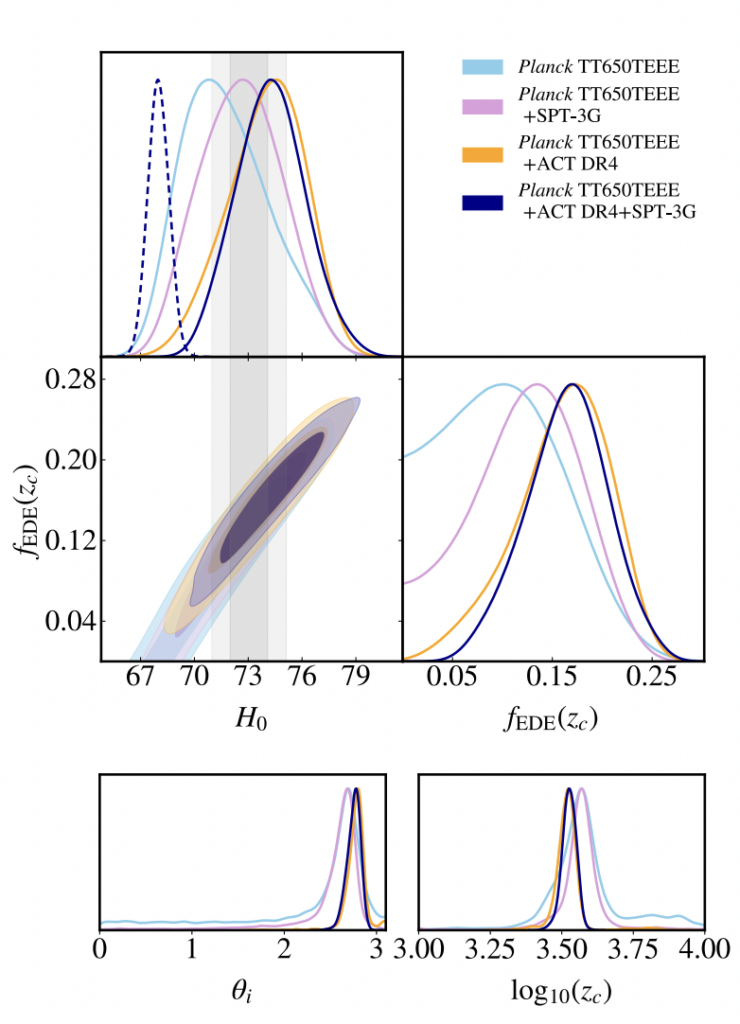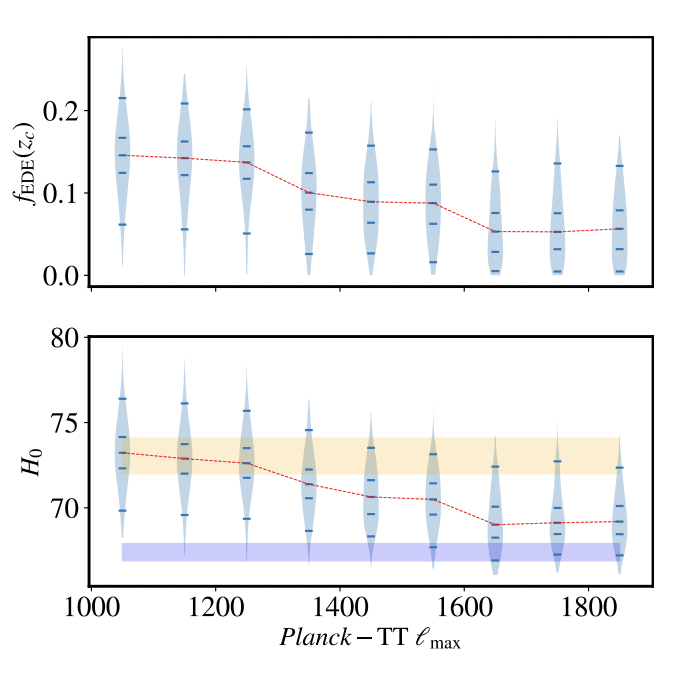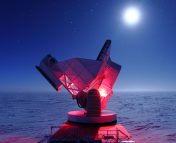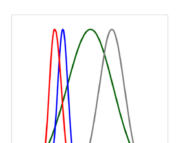Title: Hints of Early Dark Energy in Planck, SPT, and ACT data: new physics or systematics?
Authors: Tristan L. Smith, Matteo Lucca, Vivian Poulin, Guillermo F. Abellan, Lennart Balkenhol, Karim Benabed, Silvia Galli, Riccardo Murgia
First Author’s Institution: Department of Physics and Astronomy, Swarthmore College
Status: Submitted to ArXiv [18 Feb 2022]
Everyone’s heard the story of how everything came to be. The Universe started out with a (big) bang, inflation made it expand, and now dark energy is sustaining the Universe’s accelerated expansion in the present day. That’s everyone’s favorite lambda-CDM (ΛCDM) model of the Universe. But what if that’s not all there is to the story?
As astronomers collect better data, the ΛCDM model of the Universe has come under scrutiny as problems have emerged. One problem in particular is big enough to earn its own name: the Hubble tension. This refers to the fact that independent measurements of the expansion rate of the universe are producing wildly different values. This is concerning as differences this big point to either systematic uncertainties or new physics that the ΛCDM model can’t explain. While many cosmologists are testing different methods to fix possible systematic uncertainties, what if there really is new physics at play?
Dark Energy (kinda)
One possible answer is a new type of dark energy named early dark energy (EDE). Astronomers believe that this type of dark energy existed in the first 300,000 years after the Big Bang and withered away a few hundred thousand years later. While EDE isn’t strong enough to fuel the Universe’s expansion like dark energy does today, it does have an interesting effect on the early Universe. The theory goes that EDE helped cool the plasma that came from the Big Bang quicker than astronomers originally expected, which affects how the CMB should be interpreted when it comes to estimating the age of the Universe and its expansion rate. This is an exciting theory that could help solve the Hubble tension. But many astronomers have come up with other solutions to help solve the Hubble crisis, so how can we possibly know if EDE is really the right solution? Well, the answer may lie in our Universe’s baby pictures: the CMB.

By studying some of the oldest light we can see coming from the CMB, astronomers can test if EDE is truly the answer they’ve been looking for. And thankfully, telescopes such as ACT DR4, SPT-3G, and Planck provide a wealth of CMB data to analyze. Through statistical analysis, the authors of today’s paper have fit predictions from both EDE and ΛCDM models to CMB data and compared which one produced a better fit. Further, to help mitigate possible contaminating systematics, the authors have repeated these calculations for various combinations of data from the telescopes mentioned above. So who was the winner? The reigning ΛCDM champion, or the up-and-coming EDE modification? In a surprise upset, when all three datasets were combined, the authors found that the CMB dataset used actually has a moderate preference for EDE over ΛCDM! The results can be seen to the left. Hopefully no one bet too much money on ΛCDM.
ΛCDM vs EDE: Round 2
But before I lose you, the ΛCDM model isn’t actually down for the count. While this is an interesting discovery, it doesn’t mean that EDE will be written down in future textbooks quite yet. To test the robustness of these results, the authors ran several more fits on different selections and modifications of CMB data. While the results of these tests varied, not all of these modified CMB datasets continued to prefer EDE. For example, when more Planck data, specifically from its temperature power spectrum, was taken into consideration, EDE was no longer the favored model. This can be seen in the figure below. As such, it’s possible that the original preference for EDE over ΛCDM isn’t physical, but merely the result of underlying systematics. It’s clear that more high-precision data of the CMB’s temperature and polarization will be needed before astronomers can truly tell if EDE will be the next big shift in our understanding of the origins of the Universe. Stay tuned to find out!

Astrobite edited by Zili Shen
Featured image credit: ESKA Organisation/Swinburne Astronomy Productions




